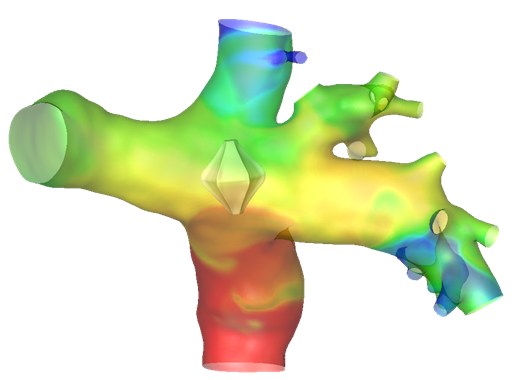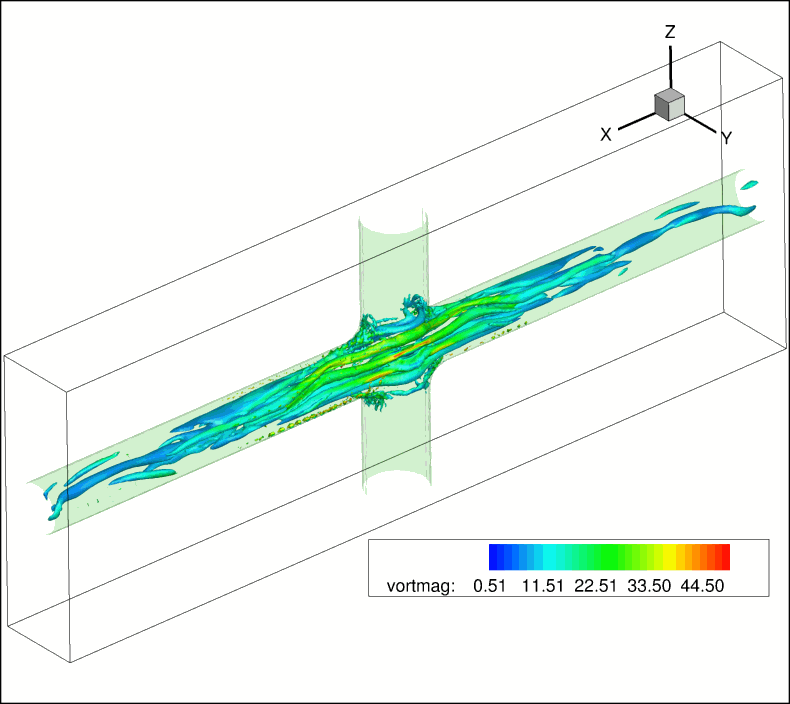Animation showing CFD predicted particle paths in a VIP-powered Fontan circulation in an idealized TCPC.

Comparisons of CFD predictions to experimental measurements of H-Q performance of a VIP-powered Fontan circulation in an idealized TCPC over range of flow rates and RPMs. Performance and prediction accuracy is excellent.

Snapshot from CFD prediction of VIP-powered Fontan circulation in an MRI-based patient-specific TCPC showing IVC scalar transport as it relates to hepatic distribution. The latest version of the VIP can be seen at the center of the TCPC junction.


Snapshots from our latest greatest LES of idealized TCPC flow using a new PETSC-based MPI version of our WenoHemo code (described on previous links) and a new immersed boundary method. Preliminary comparisons of mean velocity statistics to measured PIV data show good agreement. Simulations with the VIP and comparisons to measurements are underway and will be reported at two talks this March and May.